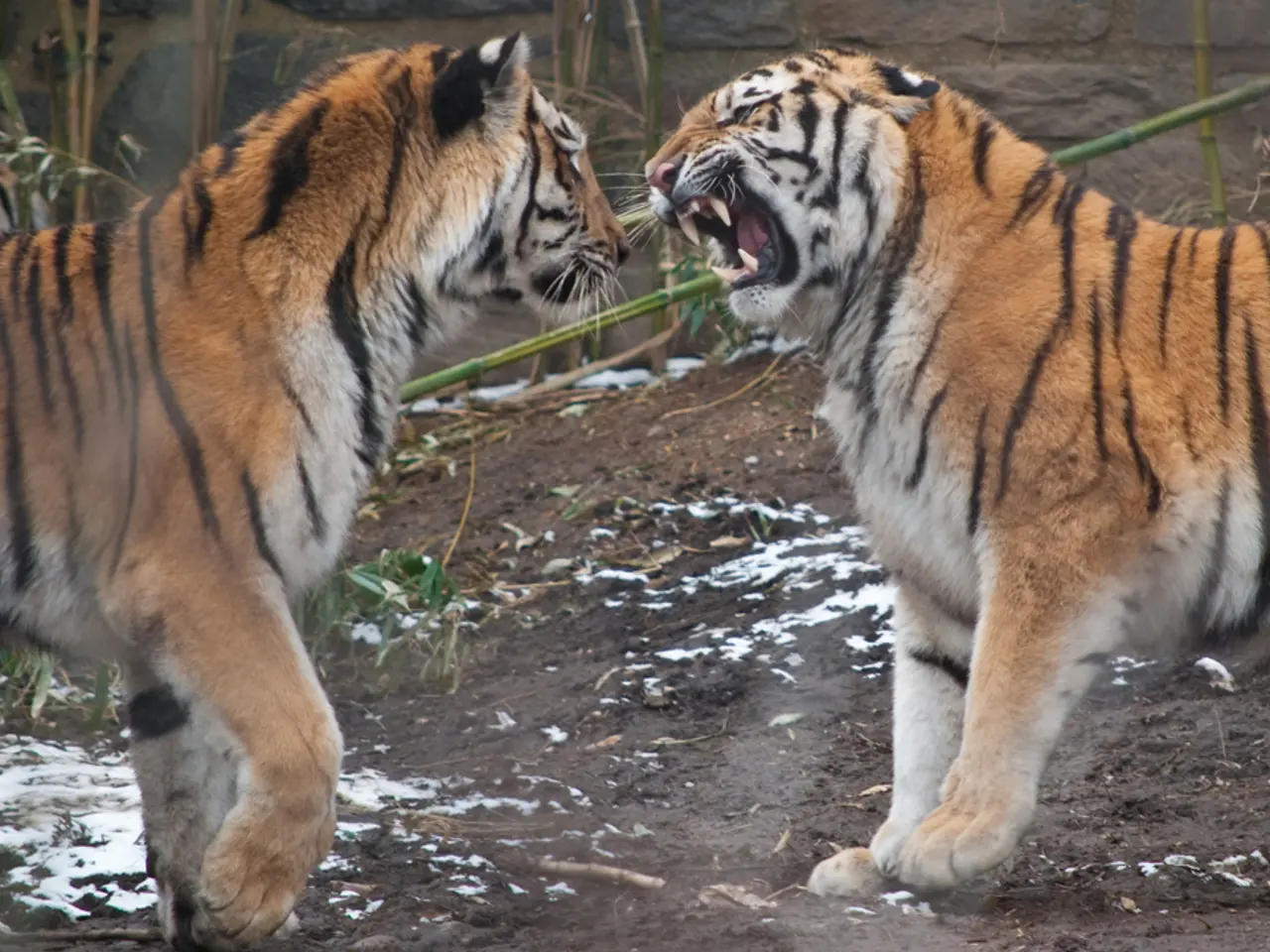"Lemurs: Nature's Adaptive Wonders"
The Peculiar Presence of Lemurs: A Deep Dive into Why They Are Found Exclusively in Madagascar
Ever gaze at a lemur, captivated by its big, exotic eyes and furry tail? It could very well be a creature straight out of a fairy tale. But there's one extraordinary fact that sets these primates apart – they've thrived, and survived, exclusively on a distant island named Madagascar. How did these extraordinary beings find their way to this secluded land? Let's dive into the captivating narrative of the lemurs and their incredible journey home.
"Epic Ocean Voyage: The Lemur's Arrival"
Travel back 60 million years, a time when humans were but a twinkle in the universe's eye. Lemur ancestors were on a journey to the far-off shores of Madagascar. Scientists hypothesize that they hitchhiked a ride on "rafts" of floating vegetation, carried across the mighty Mozambique Channel by ocean currents from Africa's shores. This daring voyage is not merely a whimsical idea but is substantiated by geological and genetic evidence [1][2].
"Madagascar: The Perfect Sanctuary"
Nowhere else on Earth could lemurs find a haven like Madagascar. Larger and more pressuring primates, like monkeys and apes, had not yet evolved in this vibrant wilderness. The island's isolation provided the ideal playground for lemurs to evolve uncontested for millions of years.
As time went by, Madagascar became a hotspot for biodiversity, harboring over 100 unique lemur species, ranging in size from the tiniest primate on the planet, the mouse lemur, to the elegant sifaka, with its elongated limbs, built for acrobatics.
"Ancestral Lineage: Origins of the Lemurs"
Lemurs belong to the primate suborder Strepsirrhini, which includes lorises and galagos. Their ancestors probably resembled modern-day bush babies or lorises, small, nocturnal primates with a keen sense of smell and hearing.
Step back in time, and you'll find the lemurs hanging on to a more primitive past. They still rely heavily on their sense of smell and have a grooming claw on their feet - traits that other primates have shed over time.
"The Island Before Lemurs: Madagascar's Prehistoric Past"
Before the arrival of the lemurs, Madagascar was a mystical realm of colossal reptiles that roamed the land, relics of the dinosaur era. As the island drifted away from the African continent, a new chapter began – the chapter of the lemurs.
The absence of apex predators allowed lemurs to seize various ecological niches, leading to a crucial adaptation - some species developed bizarre traits to prosper in unique habitats, with the aye-aye's elongated middle finger being one example [1][3].
"Trials and Challenges"
For millions of years, the lemurs thrived in Madagascar's untouched ecosystems. However, their greatest trials surfaced when humans set foot on the island approximately 1,500 to 2,000 years ago. They brought hunting, habitat destruction, and an end to many lemur species, such as the Megaladapis – a giant lemur that weighed as much as a gorilla.
Today, over 98 percent of lemur species are threatened with extinction due to human activities [1]. Protecting Madagascar's forests and its remarkable inhabitants is now essential.
"Lemurs and Humans: A Tangled Relationship"
Despite the past struggles, lemurs have emerged as the living embodiment of Madagascar's stunning beauty, attracting tourists and wildlife enthusiasts from across the globe. Conservation efforts are ongoing, with organizations working tirelessly to combat habitat loss and protect both lemurs and the unique ecosystem they inhabit.
As a Malagasy proverb goes, "A little effort by many can bring about much." The future of the lemurs relies on our ability to recognize the worth of these extraordinary beings and the valuable lessons they have to teach us about evolution, adaptation, and survival.
"Miracles of Nature: The Marvel of Lemurs"
Lemurs are more than just curious creatures with interesting features – they represent the power of evolution, adaptation, and sheer determination. Their story is forever intertwined with Madagascar's and serves as a reminder of the incredible journeys that shape our natural world. The next time you admire the sight of a lemur lazing in a tree or leaping between branches, remember the momentous voyage that led them to that very spot. Their journey, their struggles, and their triumphs will forever be etched in the annals of nature.
Enrichment Data:
- Overall: Lemurs likely reached Madagascar through rafting, a mode of dispersal based on the isolation of Madagascar from other continents and the rich biodiversity found on the island.
- Geographic Isolation: Madagascar separated from Africa around 180 million years ago and from the Indian subcontinent around 90 million years ago, leading to a long period of isolation, independent evolution, and high rates of endemism.
- Lack of Competitors: Madagascar lacked other competing primates such as monkeys, allowing lemurs to occupy a wide range of ecological niches without significant competition and fostering diversification into numerous species.
- Diverse Habitats: Madagascar's variety of environments provided the lemurs with many ecological opportunities to adapt, leading to diverse diets, lifestyles, and evolutionary paths.
- Adaptive Radiation: Over millions of years, the lemurs diversified into over 100 known species and subspecies, ranging widely in size, behavior, and diet, enabled by seasonal breeding and social structures.
- Human Impact: Human colonization around 1,500 to 2,000 years ago introduced hunting and habitat changes that led to the extinction of at least 17 larger lemur species. However, many smaller species survive, though many are now rare or endangered.
- To elevate one's home-and-garden lifestyle, one might consider adopting sustainable-living principles, as the lemurs have done in Madison, thriving by adapting to their unique environment.
- For lifelong learning and self-development, one could delve into the fascinating journey of the lemurs, an epic tale of education, survival, and evolution in the realm of education-and-self-development.
- To foster a connection with Mother Nature and learn the importance of biodiversity, take up sports like hiking or trekking to explore national parks filled with diverse wildlife, just like the lemurs call Madagascar their home, a bona fide sports destination for wildlife enthusiasts.







